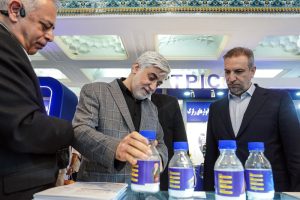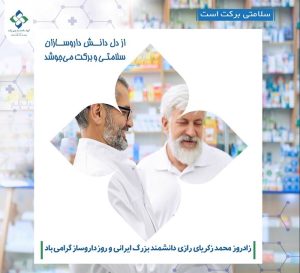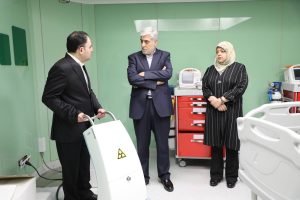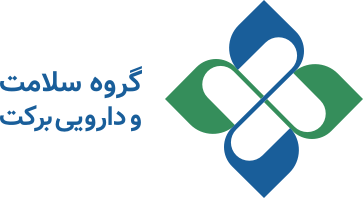
Iranian pharmaceuticals & medical equipments exports: Special importance of choosing target markets
Barekat Health & Pharmaceutical Group: Iran, with its vast pharmaceutical production capacity and advanced knowledge in the field of pharmaceutical sciences, has become one of the drug production hubs in the region. The Islamic Republic has strong infrastructure, specialized labor, and extensive experience in producing vital medications, which, along with increased domestic production and focus on research and development, has enabled the country to produce high-quality drugs that meet international standards.
On the other hand, sanctions and the need for foreign exchange have made the export of Iranian pharmaceuticals a necessity. In this regard, choosing appropriate target markets for pharmaceutical exports is of special significance.
In this regard, this text examines some of the promising countries and target markets for exporting Iranian pharmaceuticals and medical equipment, considering their economic, political, and health conditions.
Middle East and North Africa (MENA) Region:
– Iraq: Iran and Iraq have deep commercial and cultural relations, strengthened by geographical proximity and shared history. Iraq, due to issues from multiple wars and weaknesses in its healthcare infrastructure, requires imports of various medications. Iran, with its capabilities, can meet a significant portion of this need. Additionally, trade agreements and cooperation pacts between the two countries facilitate the pharmaceutical export process.
– Syria: Syria also needs imports of vital medications due to internal conflicts and the destruction of healthcare infrastructure. The close political relations between Iran and Syria and mutual support provide a suitable environment for exporting Iranian pharmaceuticals to this country. The presence of Iranian companies in rebuilding and supplying Syria’s medical needs can help strengthen bilateral cooperation.
Central Asia and the Caucasus:
– Afghanistan: Iran and Afghanistan, due to their long shared border and close cultural and historical ties, have extensive commercial relations. As a developing country, Afghanistan requires a variety of medications. Iran can capture a significant share of Afghanistan’s pharmaceutical market by leveraging geographical proximity and easy access. Trade agreements and economic collaborations between the two countries also aid the export process.
– Tajikistan: Tajikistan, one of the Central Asian countries, could be a suitable market for Iranian pharmaceuticals due to its lack of domestic drug production and import needs. The shared Persian language and historical and cultural ties between Iran and Tajikistan facilitate trade between the two countries. Scientific and technological collaborations between universities and research institutions can also enhance Iranian pharmaceutical exports to Tajikistan.
– Azerbaijan: Azerbaijan, a Caucasus country with strong commercial and cultural ties with Iran, represents a good market for Iranian medical equipment due to its advanced healthcare infrastructure and need for sophisticated equipment. Scientific and research collaborations between universities and medical centers in the two countries can boost medical equipment exports.
African Countries:
– Nigeria: With its large population and developing healthcare system, Nigeria requires a variety of medications. Iran can help meet Nigeria’s pharmaceutical needs by leveraging its experience in producing high-quality, affordable drugs. Economic cooperation and trade agreements between Iran and Nigeria can also increase Iranian pharmaceutical exports to this country.
– Kenya: As a leading country in East Africa with a growing population and increasing pharmaceutical needs, Kenya can be a suitable target market for Iran. Kenya’s government development programs in healthcare and joint collaborations with Iran create opportunities for pharmaceutical trade. By exporting vital drugs and equipment like vaccines and antiviral medications to Kenya, Iran can play a significant role in improving the country’s healthcare system.
Latin American Countries:
– Venezuela: Political and economic relations between Iran and Venezuela, coupled with Venezuela’s need for vital medications, facilitate pharmaceutical trade between the two countries. Due to the economic crisis and severe drug shortages in Venezuela, there is a need for high-quality, affordable medications. Iran can leverage its capabilities in producing vital drugs and economic cooperation with Venezuela to address this need.
– Cuba: Cuba, with its specific medication needs and political cooperation with Iran, can be a suitable market for Iranian pharmaceuticals. With an advanced healthcare system and a demand for specialized drugs, Cuba represents a good market for Iranian specialty medications. Scientific and research collaborations between Iran and Cuba can also help in developing and exporting new drugs to Cuba.
Export of Medical Equipment:
The medical equipment industry is a vital and growing sector in Iran’s economy. Despite sanctions and international restrictions, Iran has strived to achieve greater self-sufficiency in medical equipment production and to find new export markets for its products. These efforts have led to increased quality and competitiveness of Iranian products and created new export opportunities.
Production Capacity and target markets:
With over 100 active pharmaceutical companies, Iran has developed a high production capacity in various medications. These companies utilize modern technologies and collaborate with international research centers to produce vital and complex drugs, many of which are exported abroad.
Among the essential drugs exported by Iran are cancer medications, cardiovascular drugs, respiratory treatments, and antiviral drugs. Due to their high quality and competitive prices, these drugs have been well received by many countries.
In this context, Iran exports its essential medications to numerous countries in Asia, Africa, and even Europe. Neighboring countries such as Iraq, Afghanistan, Pakistan, and Syria are among the largest target markets for Iranian pharmaceuticals. Additionally, African countries, due to their high demand for essential drugs, are consistent buyers of Iranian medications.
Iraq is a primary market for Iranian medical equipment due to geographical proximity and strong political and economic relations. Iraqi medical needs after war and internal unrest are substantial, and Iranian companies have successfully exported dialysis machines and surgical equipment to Iraq, improving healthcare services in Iraqi hospitals.
Similar to Iraq, Syria’s need for healthcare infrastructure rebuilding and medical equipment due to war makes it an important export destination for Iranian medical equipment. Iran has exported diagnostic devices such as MRI and CT scanners to Syria, which have been used in newly established and reconstructed hospitals. Medical and healthcare cooperation between Iran and Lebanon has created a good market for Iranian medical equipment.
The cultural and economic proximity between Iran and Azerbaijan has made it a destination for Iranian medical equipment exports. Additionally, Turkmenistan, given its good economic relations and geographical position, is also a target market for Iranian medical equipment. Moreover, Malaysia, with its growing healthcare needs and friendly relations with Iran, is a target market for Iranian medical equipment. Iranian knowledge-based companies have exported advanced respiratory devices to Malaysia, helping hospitals provide better services.
Indonesia, with its large population and healthcare needs, is another potential market for Iranian medical equipment. Kenya, with its rapid healthcare sector growth and need for medical equipment, is a target market for Iran. Additionally, Nigeria, with its large population and need for improved healthcare infrastructure, is considered a destination for Iranian medical equipment exports.
Challenges and Opportunities
International sanctions against Iran are one of the biggest challenges for exporting essential drugs. These sanctions have created difficulties in financial transactions and securing raw materials. Moreover, the presence of strong international competitors in target markets makes exporting Iranian drugs more challenging. Technical and quality issues also pose obstacles, as some countries have doubts about the quality and standards of Iranian drugs, which can negatively impact exports.
The high demand in regional markets presents a golden opportunity for Iran in supplying medications. Neighboring and African countries, due to deficiencies in healthcare infrastructure, have a strong need for essential drugs, providing a good opportunity for Iran.
The Islamic Republic of Iran can increase the quality and diversity of its produced drugs by investing in research and development and collaborating with international scientific centers. Additionally, cooperation with international organizations and signing trade agreements can help expand export markets.
Conclusion
Iran, with its high pharmaceutical production capacity and scientific and technological capabilities, can play a significant role in meeting the pharmaceutical needs of various countries. Selecting appropriate target markets and establishing international trade relations and collaborations can enhance Iranian pharmaceutical exports and strengthen the country’s economy.
Leveraging existing political and economic relationships can also facilitate the development of Iran’s pharmaceutical trade and increase the global market share for Iranian pharmaceutical products.
Furthermore, given its domestic capabilities and efforts to develop export markets, the Islamic Republic has achieved notable successes in exporting medical equipment. Countries such as Iraq, Syria, Lebanon, Azerbaijan, Malaysia, Indonesia, Kenya, and Nigeria are among the target markets and destinations for Iranian medical equipment exports.
These countries, with their healthcare needs and friendly relations with Iran, provide good opportunities for the growth of Iranian medical equipment exports.
-
Barekat Health & Pharmaceutical Group at the 10th Iran Pharma Exhibition

-
Ali Safa visits Sobhan Oncology & Sobhan Darou

-
Pirsalehi & Safa visit Saman Daroo 8 Knowledge-based Company

-
Barekat Managing Director Visits Samen Pharmaceutical Company

-
Honoring Pharmacists’ Day

-
Barekat Top Executives Visiting to Barekat Hospital

-
Alborz Darou honored as Top Exporter of Qazvin Province in 2024

-
Footsteps & Gazes of Disease: A Revolution in Early Diagnosis

